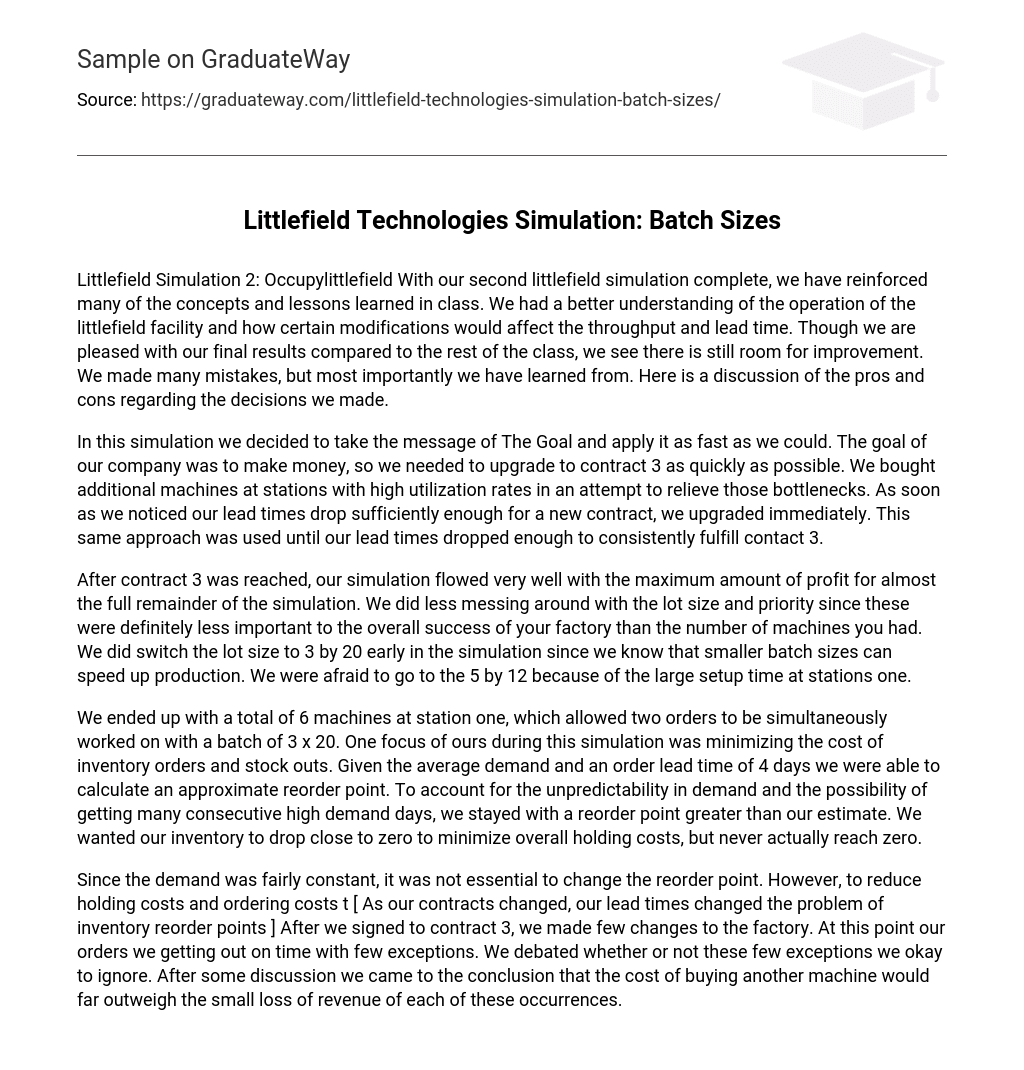Littlefield Simulation 2: Occupylittlefield With our second littlefield simulation complete, we have reinforced many of the concepts and lessons learned in class. We had a better understanding of the operation of the littlefield facility and how certain modifications would affect the throughput and lead time. Though we are pleased with our final results compared to the rest of the class, we see there is still room for improvement. We made many mistakes, but most importantly we have learned from. Here is a discussion of the pros and cons regarding the decisions we made.
In this simulation we decided to take the message of The Goal and apply it as fast as we could. The goal of our company was to make money, so we needed to upgrade to contract 3 as quickly as possible. We bought additional machines at stations with high utilization rates in an attempt to relieve those bottlenecks. As soon as we noticed our lead times drop sufficiently enough for a new contract, we upgraded immediately. This same approach was used until our lead times dropped enough to consistently fulfill contact 3.
After contract 3 was reached, our simulation flowed very well with the maximum amount of profit for almost the full remainder of the simulation. We did less messing around with the lot size and priority since these were definitely less important to the overall success of your factory than the number of machines you had. We did switch the lot size to 3 by 20 early in the simulation since we know that smaller batch sizes can speed up production. We were afraid to go to the 5 by 12 because of the large setup time at stations one.
We ended up with a total of 6 machines at station one, which allowed two orders to be simultaneously worked on with a batch of 3 x 20. One focus of ours during this simulation was minimizing the cost of inventory orders and stock outs. Given the average demand and an order lead time of 4 days we were able to calculate an approximate reorder point. To account for the unpredictability in demand and the possibility of getting many consecutive high demand days, we stayed with a reorder point greater than our estimate. We wanted our inventory to drop close to zero to minimize overall holding costs, but never actually reach zero.
Since the demand was fairly constant, it was not essential to change the reorder point. However, to reduce holding costs and ordering costs t [ As our contracts changed, our lead times changed the problem of inventory reorder points ] After we signed to contract 3, we made few changes to the factory. At this point our orders we getting out on time with few exceptions. We debated whether or not these few exceptions we okay to ignore. After some discussion we came to the conclusion that the cost of buying another machine would far outweigh the small loss of revenue of each of these occurrences.





